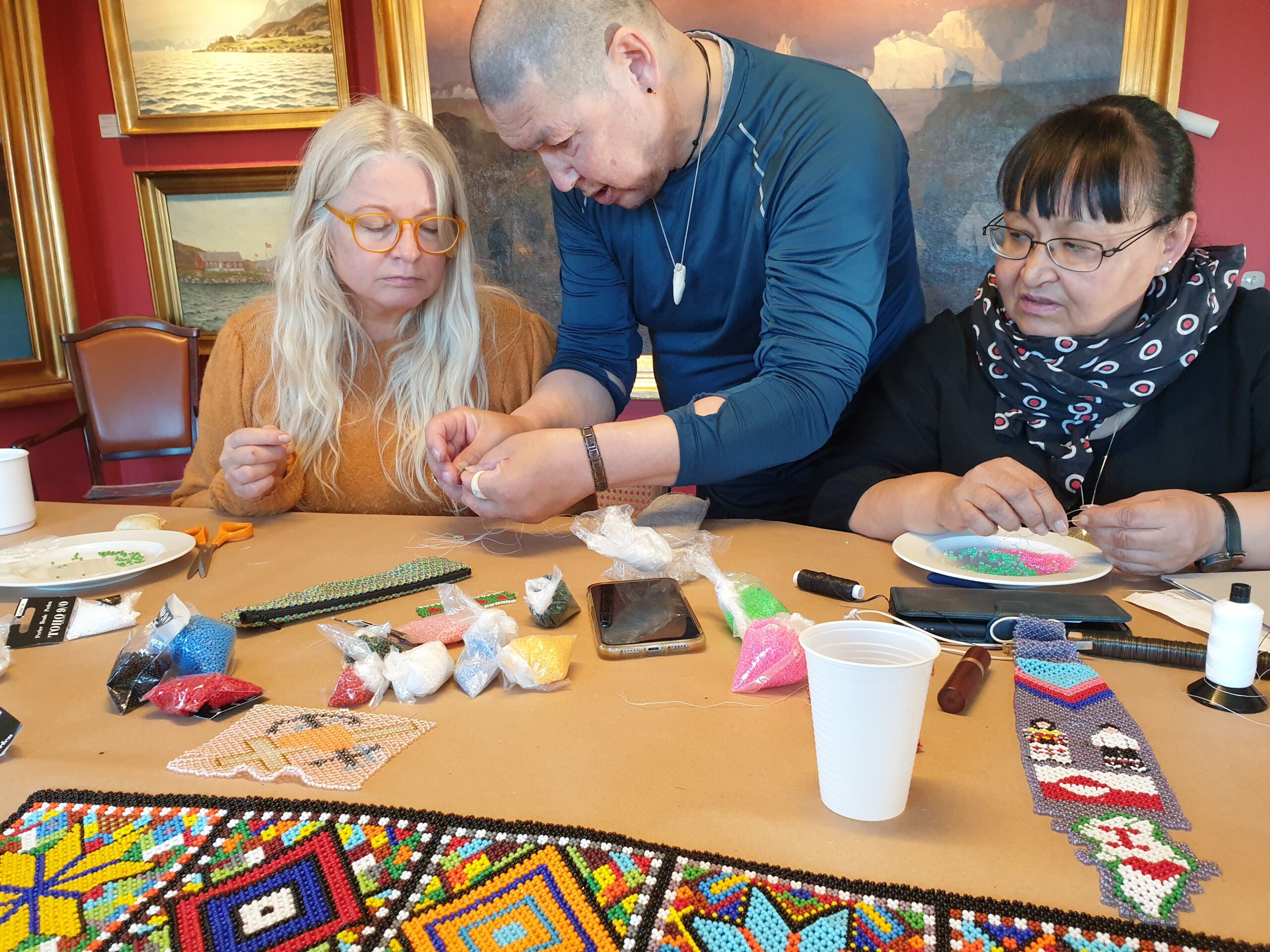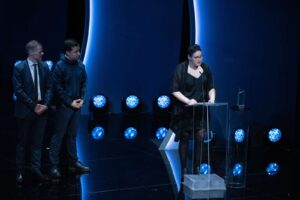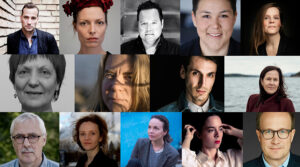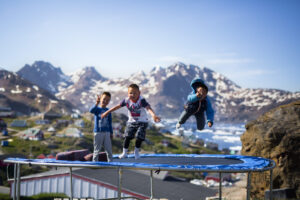
Breathing holes – an exhibition of art in crafts
Julie Bach has been on a research stay in Nuuk, where she over the course of four weeks worked in the sewing room Kittat to learn about seal skin preparation and sewing avittat.
Julie Bach was born on Rigshospitalet in 1979, but soon after the journey went to Nuuk, where the family was already living. When she was three years old, the family moved to Denmark. Surrounded by Greenlandic arts and crafts she grew up with the knowledge that her time began on the largest island in the world, and when her father died in 2014, her curiosity for the place she came from kindled.
Julie has an education from fashion design and works with sewing as an artform in her workshop in Aarhus. As a part of her project “Åndehuller” (breathing holes) she went on a research stay to Nuuk and Sisimiut, where she gained intimate knowledge about the whole process of working with seal skin.
For Julie it wasn’t just being handed seal skin, needle, and thread, but she participated in the entire process of preparing the skin, from it was delivered to Kittat, freshly flayed from the seal.
One thing Julie realised was, that the preparation of the seal skin is a physical process, in which you dig deeper and deeper under the skin of the seal. And at the same time, she felt that she dug deeper and deeper under her own skin. With the work she started to reflect on herself and her role in her family, her relation to her deceased father and her Greenlandic past.
Workshop about exchanging experiences between craft artists
Her experience from Kittat results in her art pieces, exhibited in the project “Åndehuller”, a cross-cultural exhibition, where Greenlandic and Danish artists exhibit their pieces of pearl sewing, embroidery, soft sculpture and threedimensional collage interpreting the meaning of “breathing holes”.
The other participants in the project are Najannguaq D. Lennert and Nikolaj Anguteq Kristensen from Greenland and Mette Kocmick and Marie J. Engelsvold from Denmark.
On the workshop the five artists held workshops for each other, that way sharing the knowledge and experience they have built up through the years, not just between artists, but also across cultures.
The exhibition “Åndehuller” has previously been shown in The Greenlandic House in Aarhus, and is currently being shown in Ilulissat Art Museum, until November 21.
The Project has been supported by NAPA, Great Greenland, Aarhus Kommune, Aage og Johanne Louis Hansen Fonden, Statens Kunstfond, Ellen og Knud Dalhoff Larsens Fond and Augustinus Fonden.
Other news

Allatta!-winner receives the Nordic Council’s Literature Prize 2021
For the first time a Greenlandic writer has been awarded the Nordic Council’s Literature Prize, when Niviaq Korneliussen won the award on November 2. The Playhouse in Copenhagen has settled again. Tina Dickow just left the stage after playing her song “Hjertestorm” along with Helgi

Meet the nominees for the Nordic Council Literature Prize
On 14 April, a new series of livestreamed author talks with the nominees for the Nordic Council Literature Prize will be premiered. Each week, we meet with some of the current writers to talk about survival, madness, relationships, travel desire, decay, and other perspectives that

Citizens in Disko Bay met with NAPA
NAPA’s employees are now back in Nuuk after the trip to the five towns of Disko Bay in June 2021We met with fresh students, teachers and school inspectors at the schools to talk about their Nordic opportunities, including Nordplus and Vi er Vestnorden. In the

Webinar about the Nordic Arctic Programme – and how to apply
Are you working with projects that strengthen civil society and sustainable development in the Arctic and Nordic region, or would you like to in the future? Then this webinar is for you. Join NAPA for an online introduction to the Nordic Arctic Programme (NAP) – a funding programme from the Nordic Council of Ministers supporting projects that: Directly contribute to the development of attractive and socially viable local communities in the Arctic across generations Support the development of local business opportunities and sustainable economic growth in the Arctic Directly contribute to promote green transitions and sustainable circular economy of



